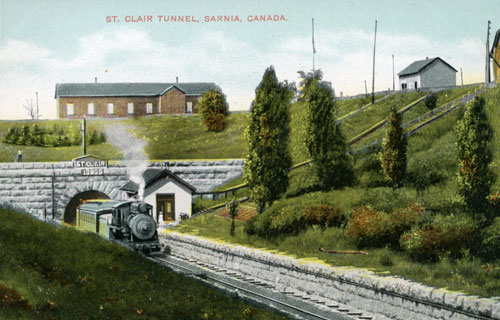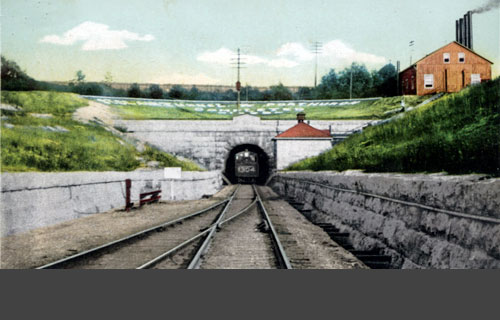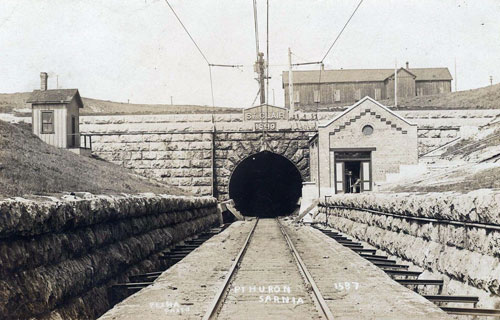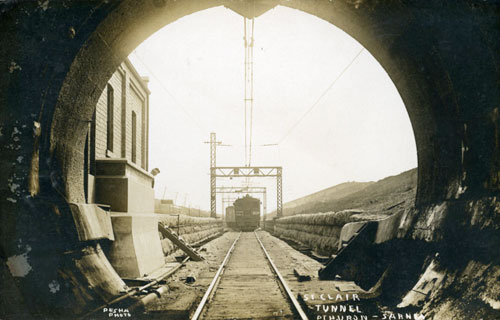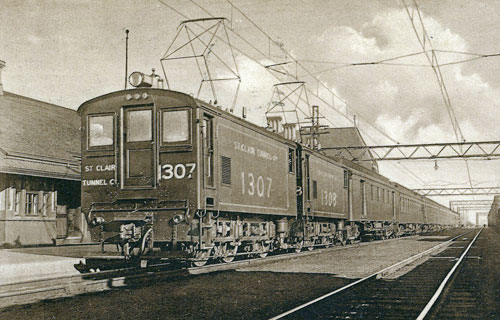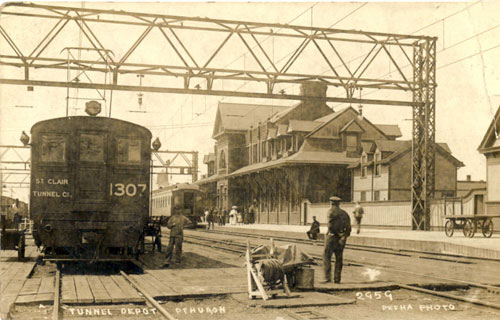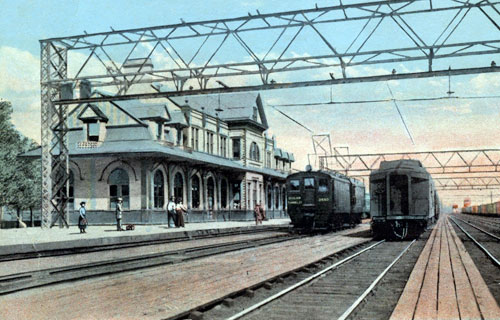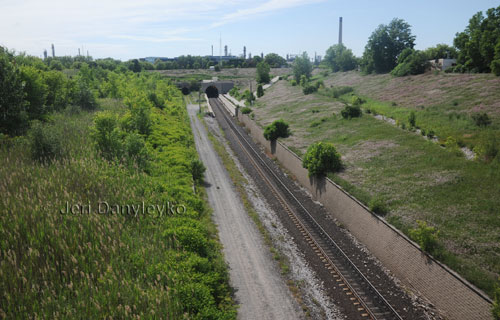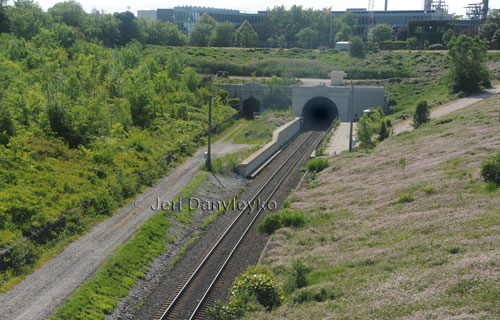Ontario Railway Stations
Sarnia (St. Clair Tunnel)
Related railways
The St. Clair Tunnel was the first sub-aqueous tunnel built in North America. It is still considered to be a major feat of civil engineering.
Construction began in 1888 under the supervision of Guelph-born Joseph Hobson, chief engineer for the Grand Trunk Railway (now CN). The tunnel ran under the St. Clair River between Sarnia and Port Huron, Michigan. It was opened in September 1891. To complete the expansion, the GTR opened two new "tunnel stations" at each end. Sarnia was opened in 1891, followed by Port Huron in 1892.
One problem that plagued the tunnel from the outset was poor air quality. After a number of incidents, which tragically resulted in several fatalities, the tunnel was electrified in 1908. This required a switchover of locomotives from steam to electric at each end. The system remained in place for 50 years until the changeover to diesel in 1958.
Despite local objections, the Port Huron station was demolished in 1974. The Sarnia station remains in use by VIA Rail.
The St. Clair Tunnel was used until 1994 when it was replaced with the Paul M. Tellier Tunnel. Named for then CN President, it was built to accommodate intermodal containers, multi-level auto carriers and other types of specialty rail cars. The two tunnels now sit side-by-side. The older tunnel has been sealed and the tracks lifted.
The St. Clair Tunnel has been designated as a Provincial Historic Site, a National Historic Site and also a National Historic Civil Engineering Site.

